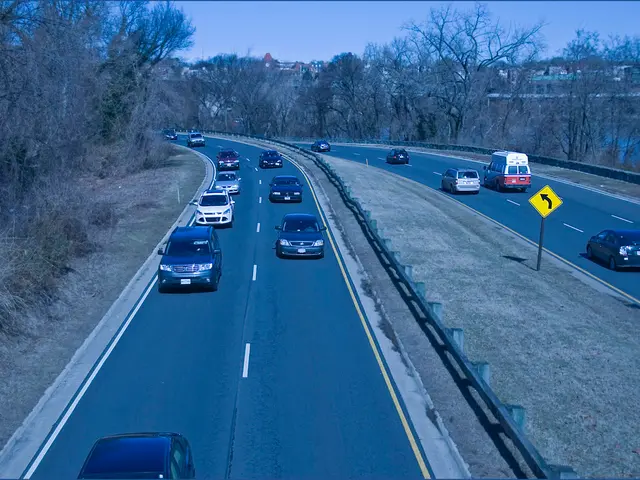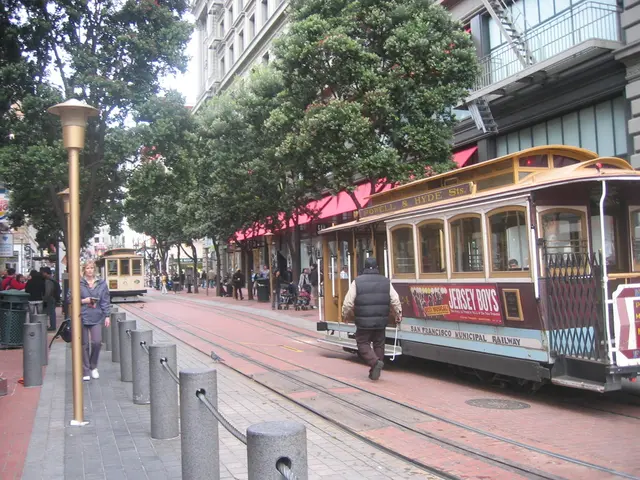Proposed transformation of 'People's Park' in Old Ottawa East into a four-lane highway axed in new scheme.
🌲 Saving the People's Park: Ottawa Ditches Controversial Freeway Proposal 🚗
It seems like the City of Ottawa has finally made a move that the locals have been waiting for. They've decided to squash the controversial plan to build a freeway through Lees Avenue's expansive green lung, famously known as the "People's Park."
Since 1966, this greenspace in the Old Ottawa East neighborhood had been marked for destruction, with the vision of transforming it into a highway corridor—part of the Alta Vista Transportation Corridor (AVTC) designed to connect Walkley Road to the Queensway, with the aim of easing congestion in central-east Ottawa.
But after decades of community protests and activism, the City of Ottawa has made their move. In the latest Transportation Master Plan update released on March 31, the northern section of the AVTC proposal, where People's Park is situated, was recommended for removal. Final approval for this groundbreaking decision is coming soon.
"A road connection within this segment would offer no effective congestion relief, primarily due to downstream capacity constraints," the update reads, pointing out the choking traffic at Nicholas Street and Highway 417 at Nicholas.
Councillor Shawn Menard, a vocal opponent of the proposed freeway, quickly announced the good news of the People's Park being safe from destruction. "This news comes after years of advocacy from residents, the local community, and the councillor's office," Menard stated.
The altered AVTC will now run from Walkley to Hurdman Station, south of the People's Park—across the Rideau River.
Residents like John McCrea, who grew up in Old Ottawa East and moved back to the neighborhood in 2020, have expressed their relief at the city's decision, saying they view the park as an essential asset to the community, given its role as one of the chain of greenspaces along the Rideau River.
Menard also emphasized the importance of green spaces, highlighting the park's use by children, athletes, and the general public. Interestingly, the park even doubles as a makeshift javelin training ground!
"Where else would you see javelin being played?" Menard asked. "It's one of the only remaining green spaces directly accessible to the community."
Menard further argued that maintaining precious greenspaces is crucial, given the high costs associated with the AVTC—estimated at around $150 million for the bridge over the Rideau River and the accompanying interchange.
Additionally, Menard points out that urban planning priorities in the city have changed, with safer and more sustainable alternatives gaining favor. "The city has evolved and now understands the value of a 15-minute neighborhood," he said.
By implementing the 15-minute neighborhood concept, which allows residents easy access to amenities within a 15-minute walk, bike ride, or public transit commute, Menard argues that the original vision for the freeway would only have worsened conditions, providing no meaningful improvement to commutes while negatively impacting the community.
"Building a freeway with associated emissions next to a playground, school, and community center would have led to poorer air quality, increased public health risks, and division within our community," he explained.
As consultations continue through the spring, Menard emphasized that he hopes the city will find sustainable alternatives to losing valuable green spaces and increasing car traffic in the future.
- The City of Ottawa's latest update in the Transportation Master Plan has recommended the removal of the northern section of the Alta Vista Transportation Corridor (AVTC) proposal, primarily due to traffic congestion risks.
- Residents like John McCrea, who view People's Park as an essential asset to the community, have expressed their relief at the city's decision to save the park from being turned into a highway corridor.
- Councillor Shawn Menard, a vocal opponent of the proposed freeway, argued that maintaining precious greenspaces is crucial, considering the high costs associated with the AVTC and the decrease in urban health and air quality.
- Menard also emphasized that urban planning priorities in the city have changed, with safer and more sustainable alternatives gaining favor, such as the 15-minute neighborhood concept.
- The altered AVTC will now run from Walkley to Hurdman Station, south of the People's Park—across the Rideau River, thus avoiding the risk of negative impacts on the community and the park.
- By implementing the 15-minute neighborhood concept, Menard believes that the city can provide easy access to amenities while minimizing the negative effects of increased car traffic and the associated risks to the climate and public health.
- Menard further urged the city to find sustainable alternatives in the future, avoiding the construction of infrastructure that would negatively impact valuable green spaces and community cohesion.








